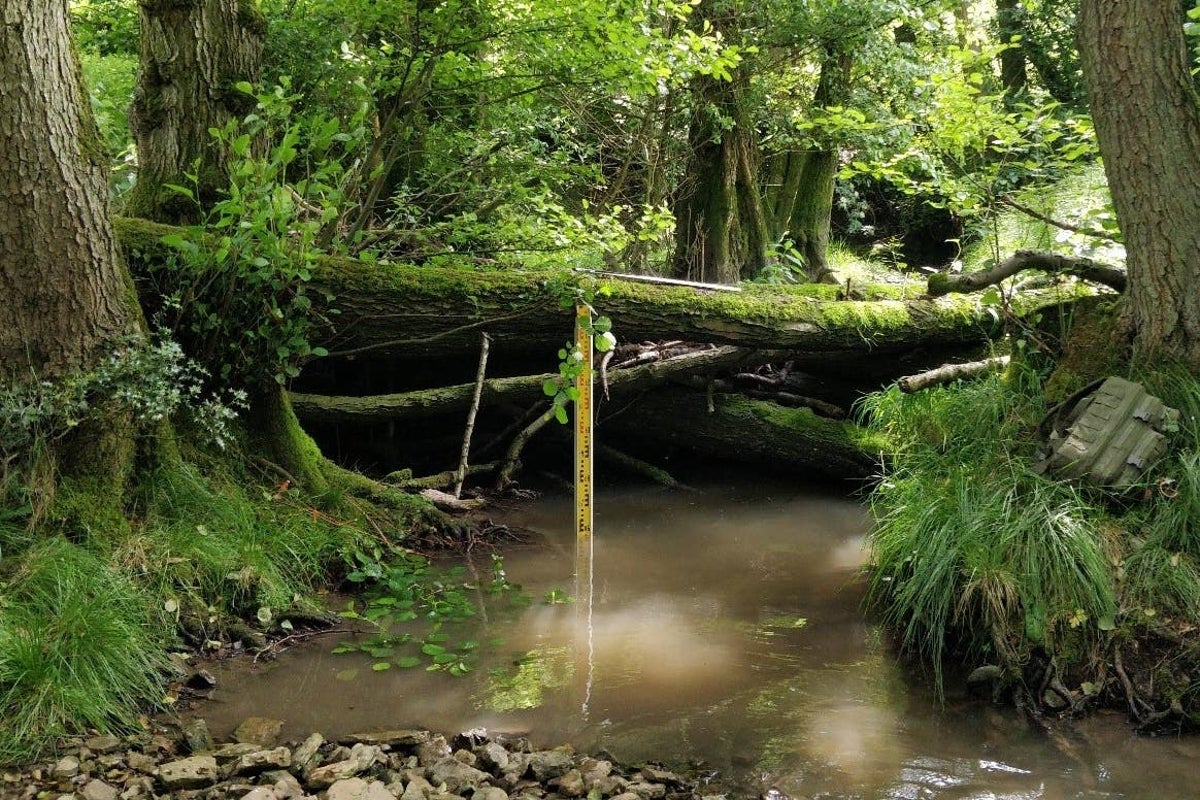
River barriers similar to those built by beavers can protect communities at risk of flooding by storing water upstream then slowly releasing it, a study has found.
Researchers from Cardiff University and the University of Worcester assessed the impact of leaky barriers, made from natural material such as trees, branches, logs and leaves, on a small Shropshire river over a two-year period.
The barriers, made to imitate beaver dams, deliberately raise water levels upstream to slow down river flow through storage and diversion – providing benefits to the river and nearby farmland.
Scientists previously used numerical modelling to measure their impact but this study involved the gathering of data from 105 leaky barriers over a distance of three miles.
Where flooding does occur, we often see extreme human and socio-economic cost. And so, it’s vital that we better understand how to combat these events in the most effective way possible— Dr Catherine Wilson, Cardiff University
The research, published in the Journal of Hydrology, found the site’s leaky barriers could store enough water to fill at least four Olympic-sized swimming pools during significant storm events such as Storm Dennis.
Raised water levels of up to 0.8 metres were recorded at each barrier, which the scientists said slowed the flow of the river during storm events.
Levels took between seven and nine days to return to normal, with water slowly released over a period of seven to 10 days – protecting communities from flooding downstream.
Dr Catherine Wilson, of Cardiff University’s School of Engineering, said: “In recent years, we’ve seen a significant increase in flood risk across the UK and internationally due to greater storm intensity and other climate change-related factors.
“Where flooding does occur, we often see extreme human and socio-economic cost. And so, it’s vital that we better understand how to combat these events in the most effective way possible.”
During the study, researchers placed monitoring equipment on leaky barriers spanning three channels to measure their effects on water levels upstream and downstream over time.
Drone images of the site were used to make accurate measurements of the land elevation in areas of the river covered by trees and plants.
Dr Wilson added: “For the first time, our study provides quantifiable in-depth evidence of the effectiveness of nature-based solutions in tackling these flood events.
“We show that leaky barriers are effective in slowing down the flow of the river during periods of rainfall, storing up vast quantities of water which would otherwise rush through causing damage to communities downstream.
“Instead, this force is slowly released over a period of a week to 10 days.
“Leaky barriers are most effective in narrow channels with steep banks and better at reducing flooding during smaller storm events than during larger ones.
“This tells us that they are a valuable addition to existing flood management strategies.
“Not only that, leaky barriers offer a low-cost solution of between £50 and £500 and are a sustainable flood defence which increases biodiversity in our rivers and on nearby land.”
Research continues to monitor the effectiveness of leaky barriers at the Shropshire site, one of 60 identified by the Department for Environment, Food and Rural Affairs, to evaluate natural flood management.
The scientists said findings from their study can be used by government and industry to develop flood defences for smaller, more frequent storms and to help create an approach for modelling leaky barriers during larger storms.
Professor Ian Maddock, Professor of River Science at the University of Worcester, said: “The results of the study have helped inform our work with local authorities to identify new sites for natural flood management.
“It’s enabled us to target sites where the installation of leaky barriers will have the greatest impact in reducing flood risk to communities and landowners downstream.”
The paper, Field-based monitoring of instream leaky barrier backwater and storage during storm events, is published in the Journal of Hydrology.







